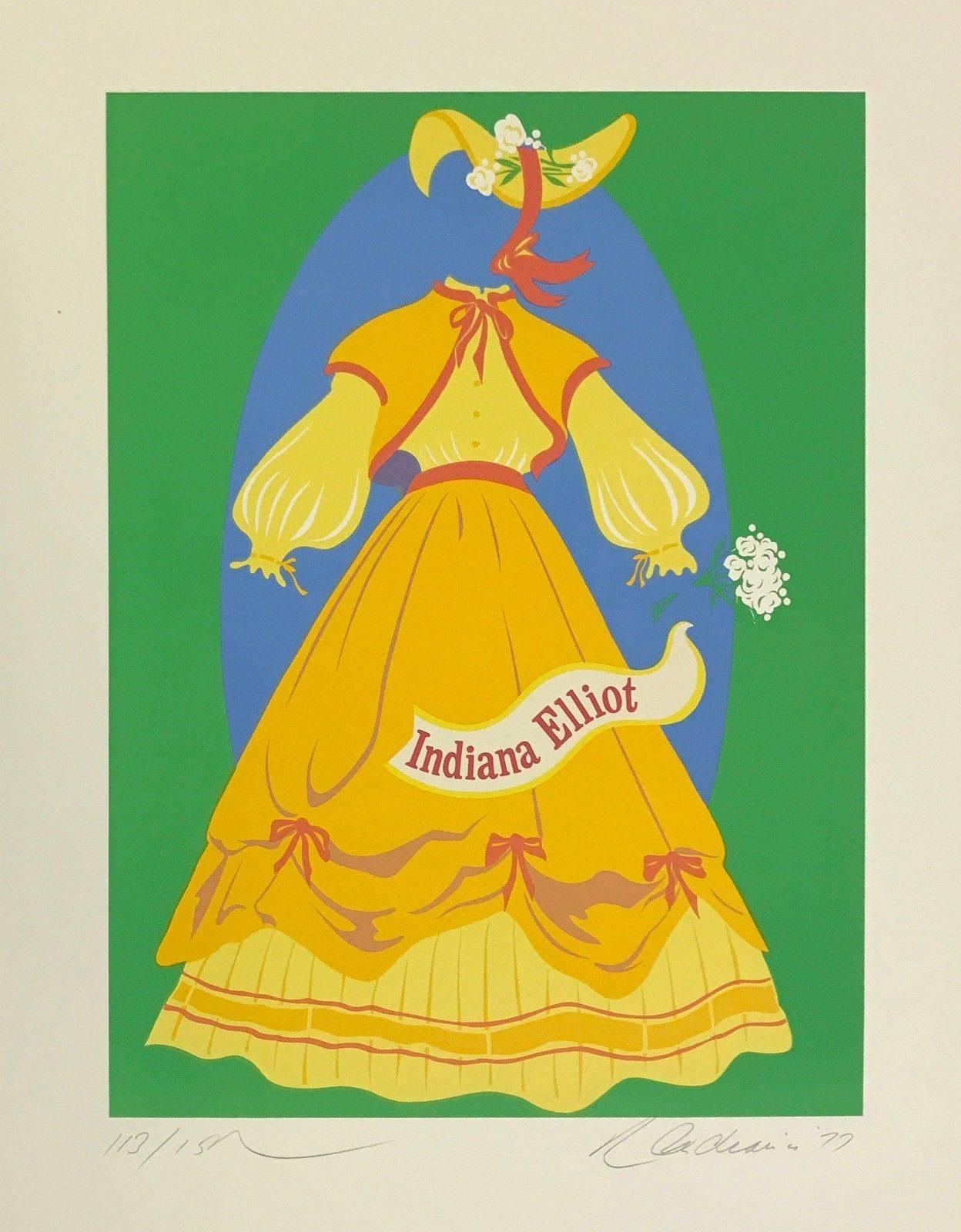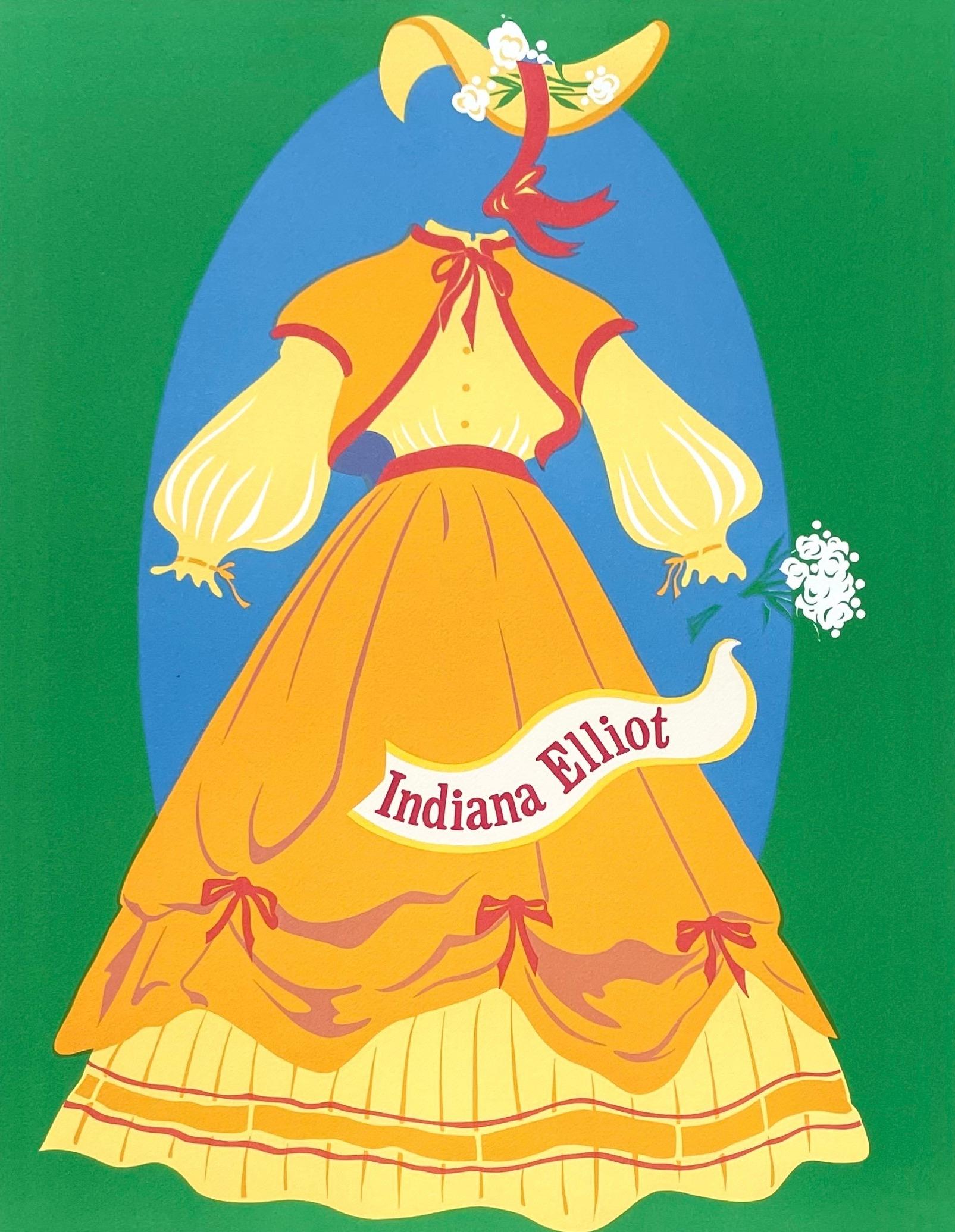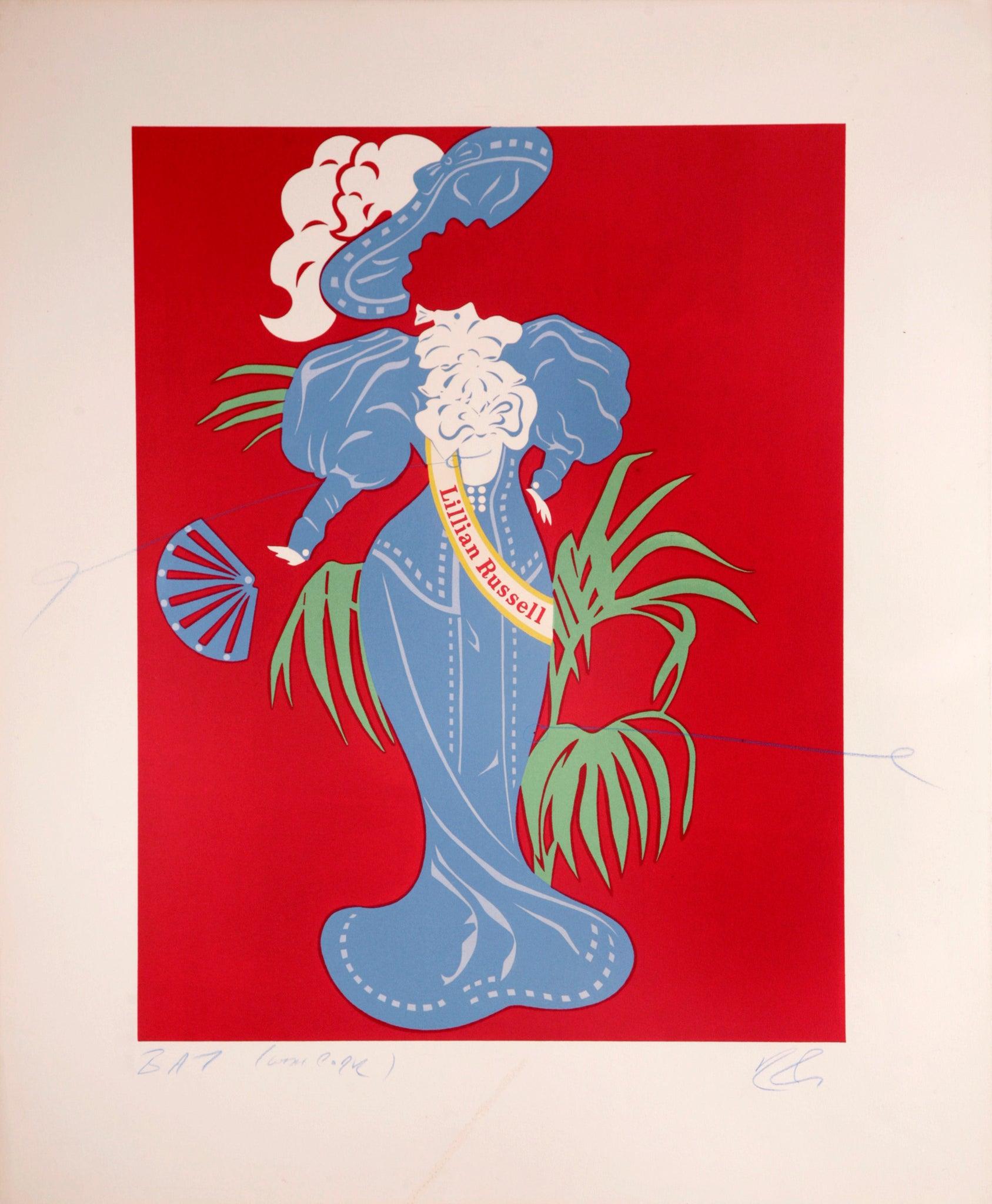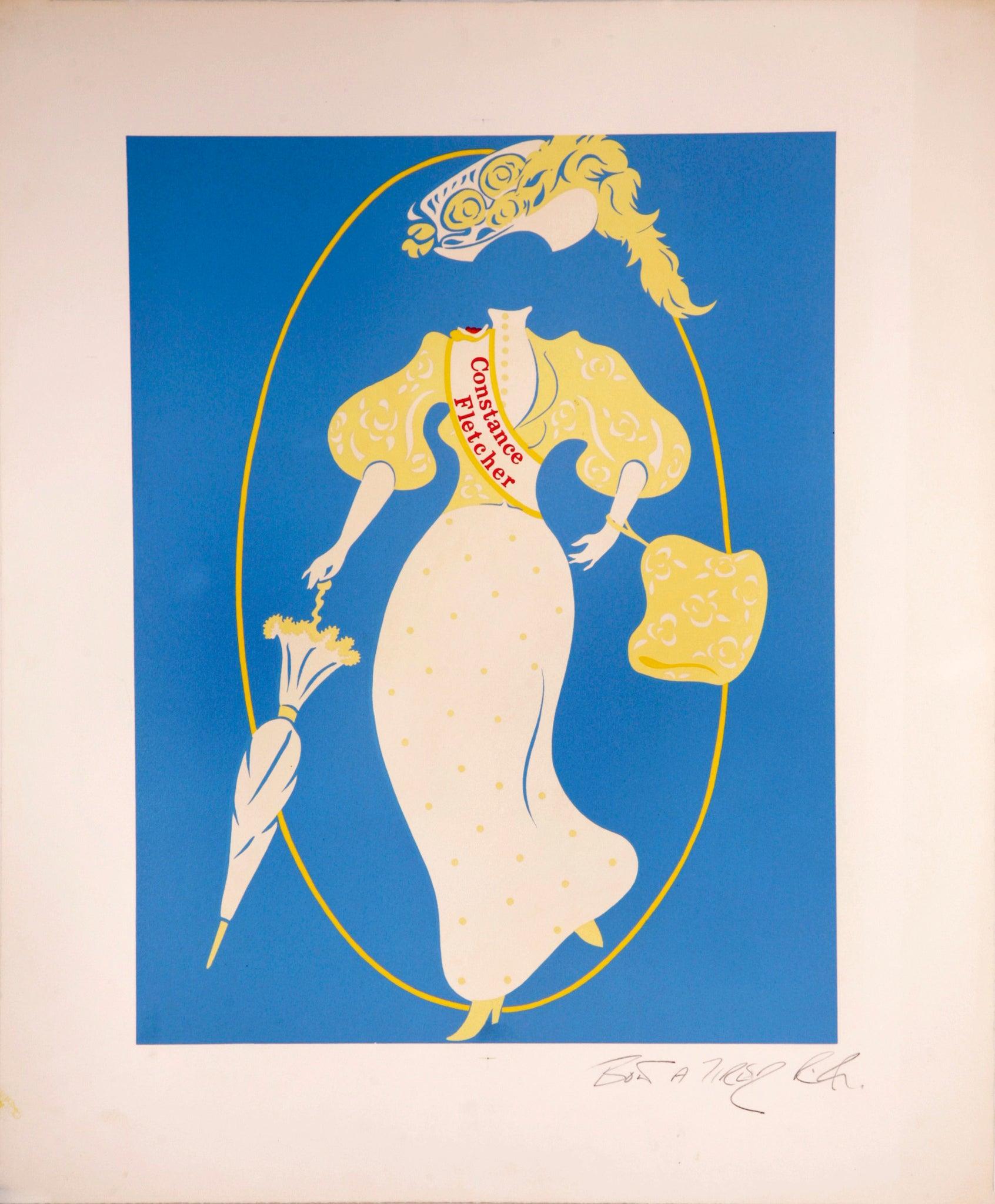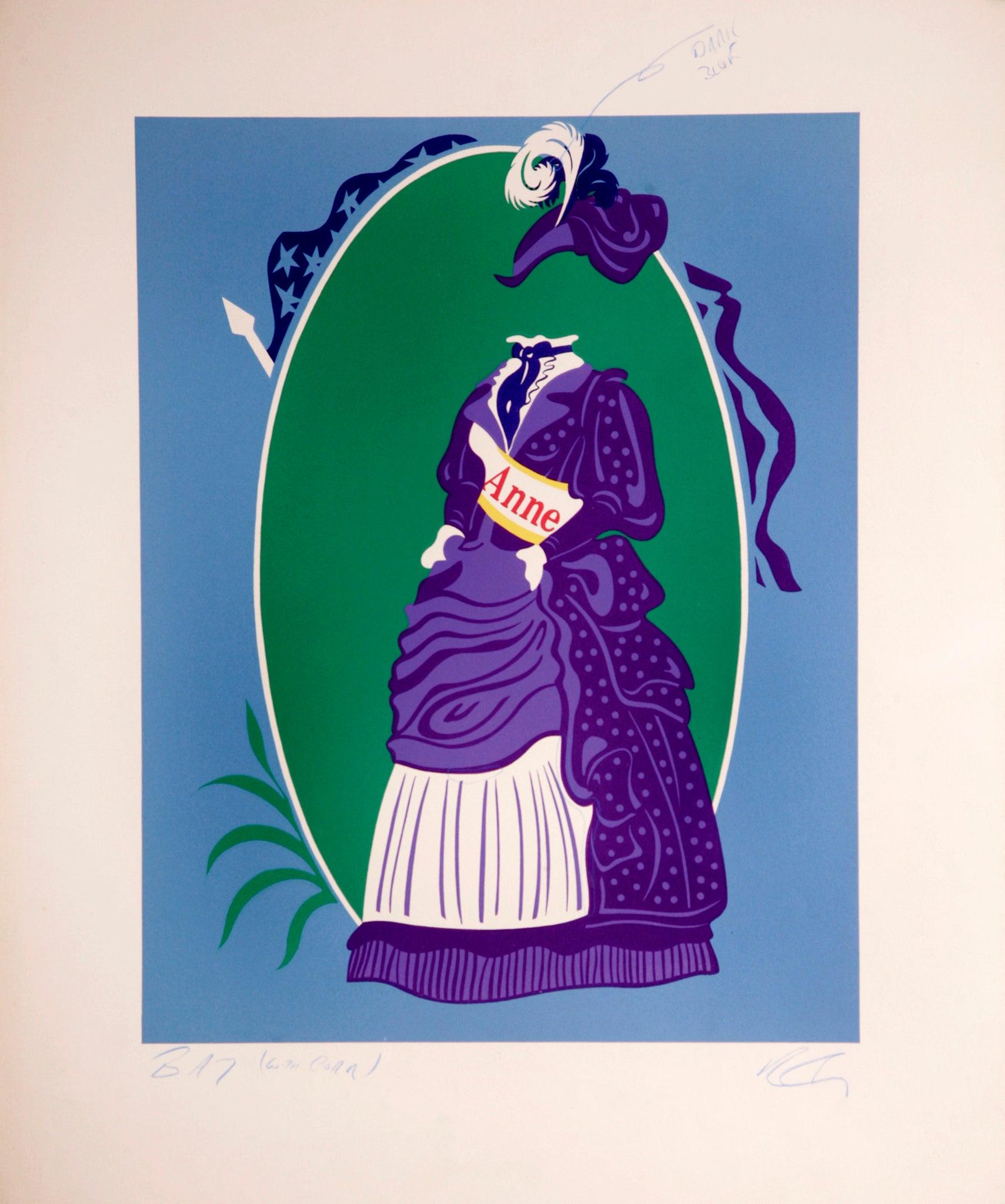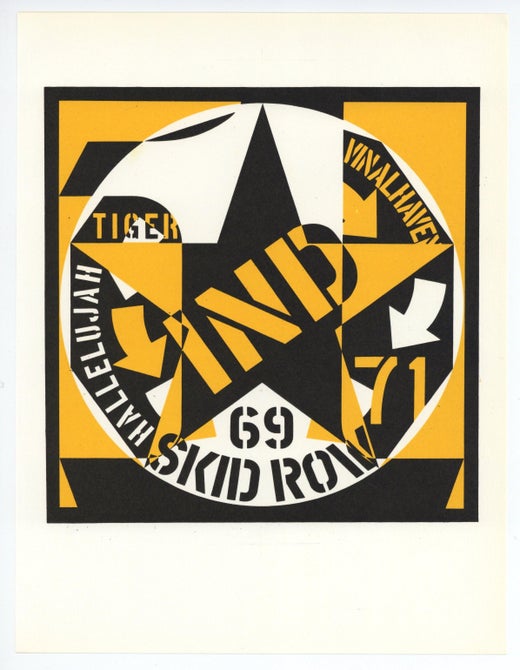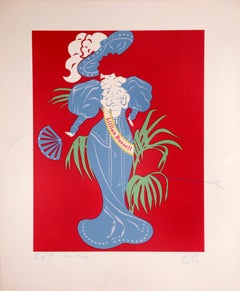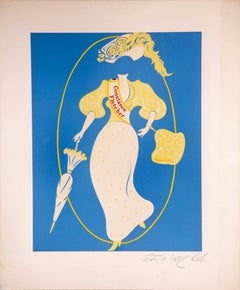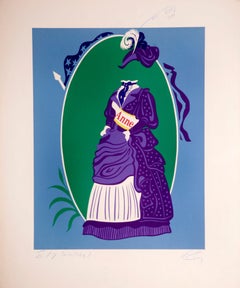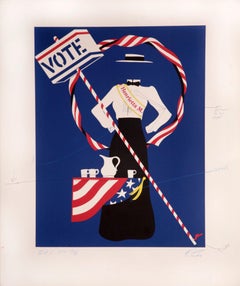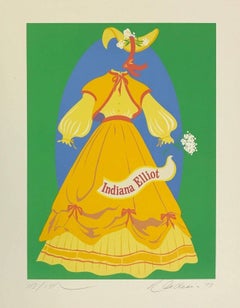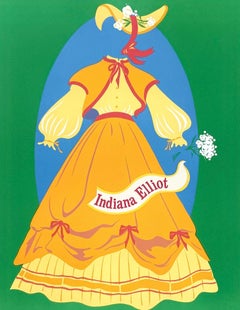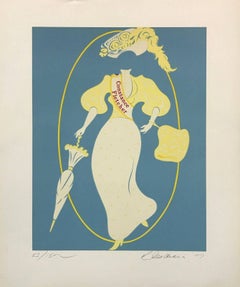Robert IndianaIndiana Elliot - Mother of Us All portfolio by Robert Indiana, 19771977
1977
About the Item
- Creator:Robert Indiana (1928 - 2018, American)
- Creation Year:1977
- Dimensions:Height: 24 in (60.96 cm)Width: 20 in (50.8 cm)
- Medium:
- Period:
- Condition:
- Gallery Location:New York, NY
- Reference Number:1stDibs: LU132329617592
Robert Indiana
Robert Indiana's work evolved into hard-edged graphic images of words, logos and typographic forms, earning him a reputation as one of the country's leading contemporary artists.
Indiana is known for using public signs and symbols with altered lettering to make stark and challenging visual statements. In his prints, paintings and constructions, he gave new meaning to basic words like Eat, Die and Love. Using them in bold block letters in vivid colors, he enticed his viewers to look at the commonplace from a new perspective. One indication of his success was the appearance of his immensely popular multi-colored Love on a United States postage stamp in 1973.
Find a collection of original Robert Indiana art today on 1stDibs.
- ShippingRetrieving quote...Shipping from: New York, NY
- Return Policy
More From This Seller
View All1970s Prints and Multiples
Lithograph
1970s Abstract Prints
Lithograph
1970s Prints and Multiples
Lithograph
1970s Prints and Multiples
Lithograph
1970s Prints and Multiples
Lithograph
1970s Prints and Multiples
Lithograph
You May Also Like
1970s Pop Art Figurative Prints
Lithograph, Paper
1970s Pop Art Figurative Prints
Lithograph
1970s Pop Art Figurative Prints
Screen
1970s Pop Art Figurative Prints
Lithograph, Paper
1970s Pop Art Figurative Prints
Lithograph
1970s Pop Art Figurative Prints
Paper, Lithograph
